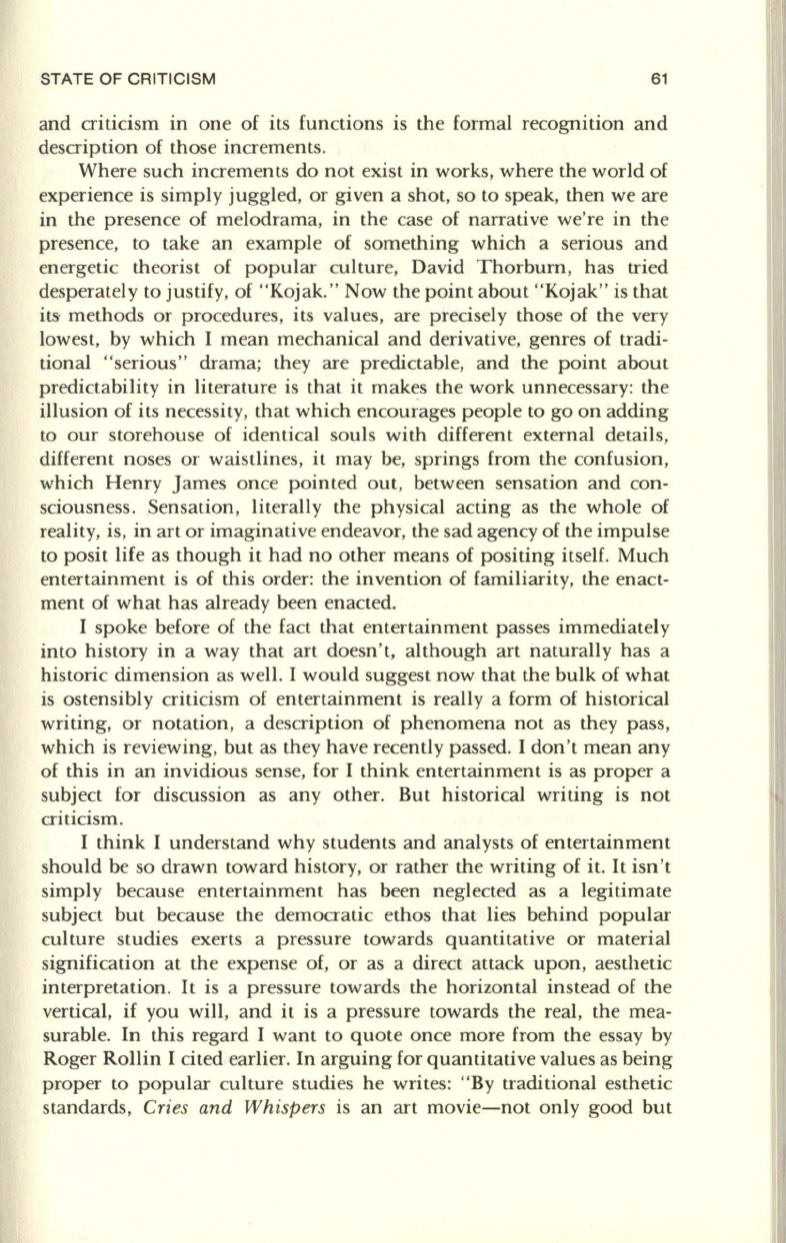
STATE OF CRITICISM
61
and criticism in one of its functions is the formal recognition and
description of those increments.
Where such increments do not exist in works, where the world of
experience is simply juggled, or given a shot, so to speak, then we are
in the presence of melodrama, in the case of narrative we're in the
presence, to take an example of something which a serious and
energetic theorist of popular culture, David Thorburn, has tried
desperately to justify, of "Kojak." Now the point about "Kojak" is that
its- methods or procedures, its values, are precisely those of the very
lowest, by which I mean mechanical and derivative, genres of tradi–
tional "serious " drama; they are predictable, and the point about
predictability in literature is that it makes the work unnecessary: the
illusion of its necessity, that which encourages people to go on adding
to our storehouse of identical souls with different external details,
different noses or waistlines, it may be, springs from the confusion,
which Henry James once pointed out, between sensation and con–
sciousness. Sensation, literally the physical acting as the whole of
reality, is, in art or imaginative endeavor, the sad agency of the impulse
to posit life as though it had no other means of positing itself. Much
entertainment is of this order: the invention of familiarity, the enact–
ment of what has already been enacted.
I spoke before of the fact that entertainment passes immediately
into history in a way that art doesn't, although art naturally has a
historic dimension as well. I would suggest now that the bulk of what
is ostensibly criticism of entertainment is really a form of historical
writing, or notation, a description of phenomena not as they pass,
which is reviewing, but as they have recently passed. I don 't mean any
of this in an invidious sense, for I think entertainment is as proper a
subject for discussion as any other. But historical writing is not
criticism.
I think I understand why students and analysts of entertainment
should be so drawn toward history, or rather the writing of it.
It
isn 't
simply because entertainment has been neglected as a legitimate
subject but because the democratic ethos that lies behind popular
culture studies exerts a pressure towards quantitative or material
signification at the expense of, or as a direct attack upon, aesthetic
interpretation.
It
is a pressure towards the horizontal instead of the
vertical, if you will, and it is a pressure towards the real, the mea–
surable. In this regard I want to quote once more from the essay by
Roger Rollin I cited earlier. In arguing for quantitative values as being
proper to popular culture studies he writes: "By traditional esthetic
standards,
Cries and Whispers
is an art movie-not only good but


